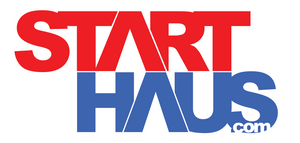Language of Wax
A good friend said to me recently, “wax is like a language.” The best World Cup technicians work with only 1 (about half) or 2 wax languages, never 3. However, waxing and tuning skis is their job, and they are the best in the world (just as their athletes are the best it the world). You should strive to learn simply 1 waxing language.
Take a look at the waxing chart that you are using with the wax you have. Examine how your system deals with the variables: snow temp, snow humidity, event, air temp, air humidity, and snow structure. The nature of the waxing system, its language, will be revealed.
Generally, most systems rely on snow temperatures as the primary info that you need to have. However, how many parents and coaches alike listen to the weather report for race day and make the wax decision based on the weatherman? One good thing in your favor is that snow temperatures are very slow to change, unlike air temps. So a thermometer in the snow at Stowe will be quite accurate (for junior USSA & FIS racing) when the race is at Burke or Sugarbush the next day.
Next, take a look at the snow’s humidity. This is simple – try to make a snowball. No chance –the snow is dry. A weak snowball indicates middle humidity snow, and a sticky, wet, big snowball indicates high snow humidity. This is important. All Holmenkol wax can be easily adapted for the snow’s humidity through the addition of GW-25 to the wax in any percentage needed.
After that, examine the snow’s structure. Is the snow fresh, with sharp edges? Is it transformed new snow, where the edges are broken off? Snowmaking snow? Has it melted and re-frozen? How big or small are the snow crystals? Holmenkol allows for adaptation of the wax based on the snow’s aggressiveness using a product called Ultra, a hardener.
Lastly, what is the air humidity and temperature? You can always get the air temps at different altitudes from the weather service, but the air humidity at snow level can only be accurately determined by having the proper tool, a hygrometer. At World Cup, the readings from the hygrometer must be taken at the same time of day as the start, since airflow up & down the mountain changes throughout the day. Many waxes adapt for high air humidity with overlay products, which can be in the form of sticks, pastes, or powders that are usually applied just on race days.
After you have all this information, you are ready to wax fast for the next day. Take a look again at your wax chart to see how your wax’s “language” interacts with the information you have just gathered. This will tell you the most about the nature of the system you are using.
Remember, in the words of Willi Wiltz, (USST Men’s Speed Tech) “the fastest thing I put on your skis today is you!”
